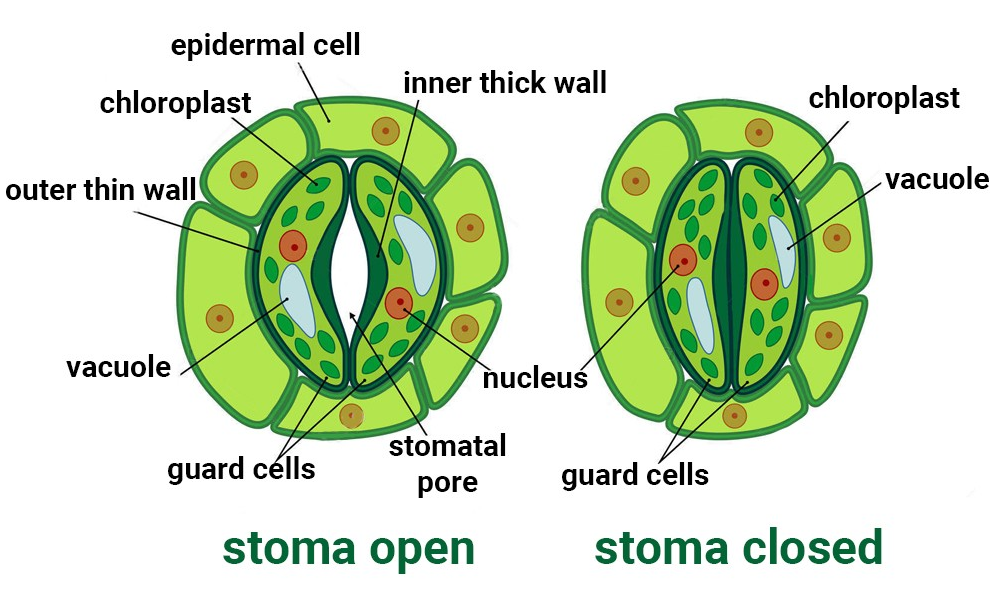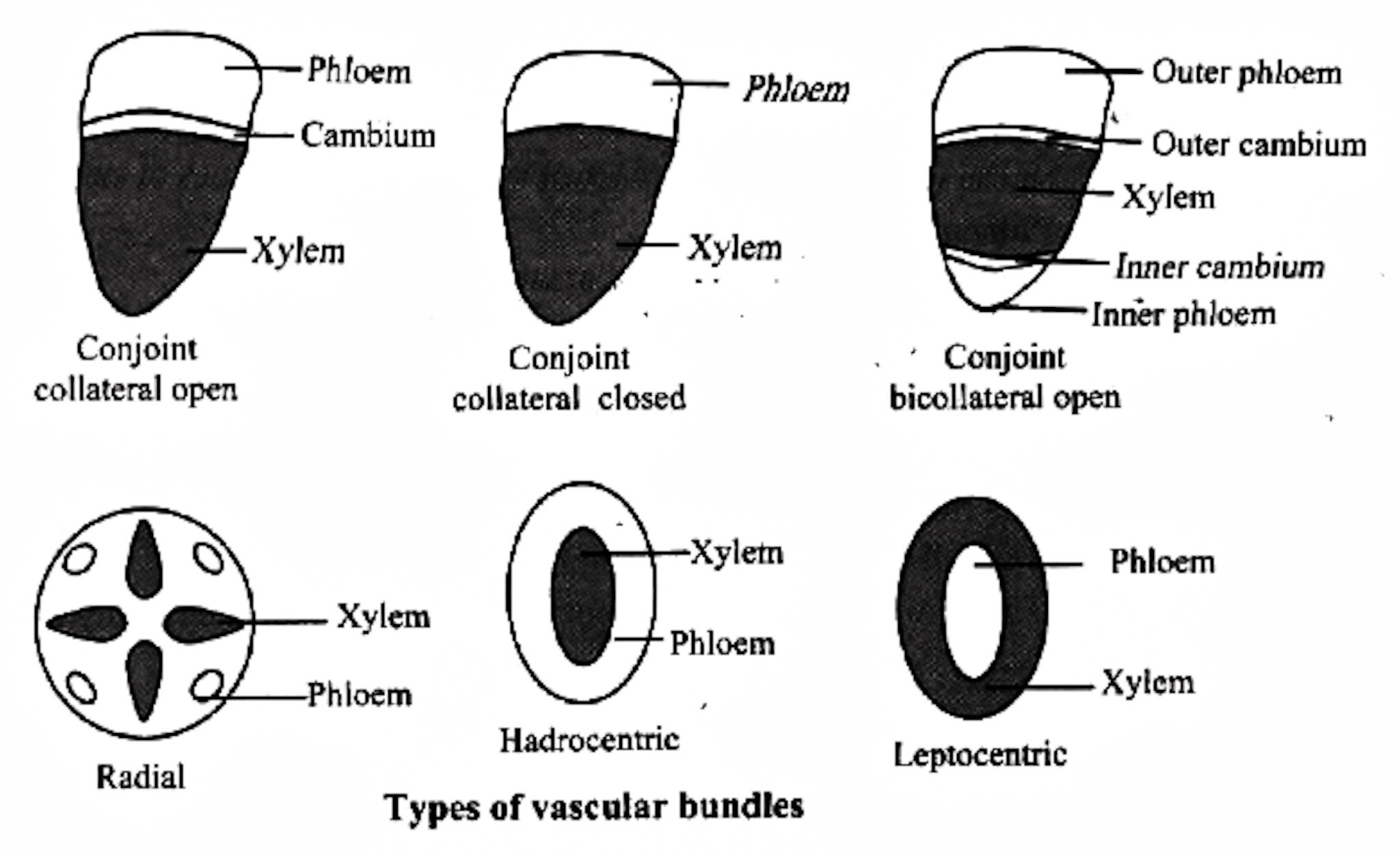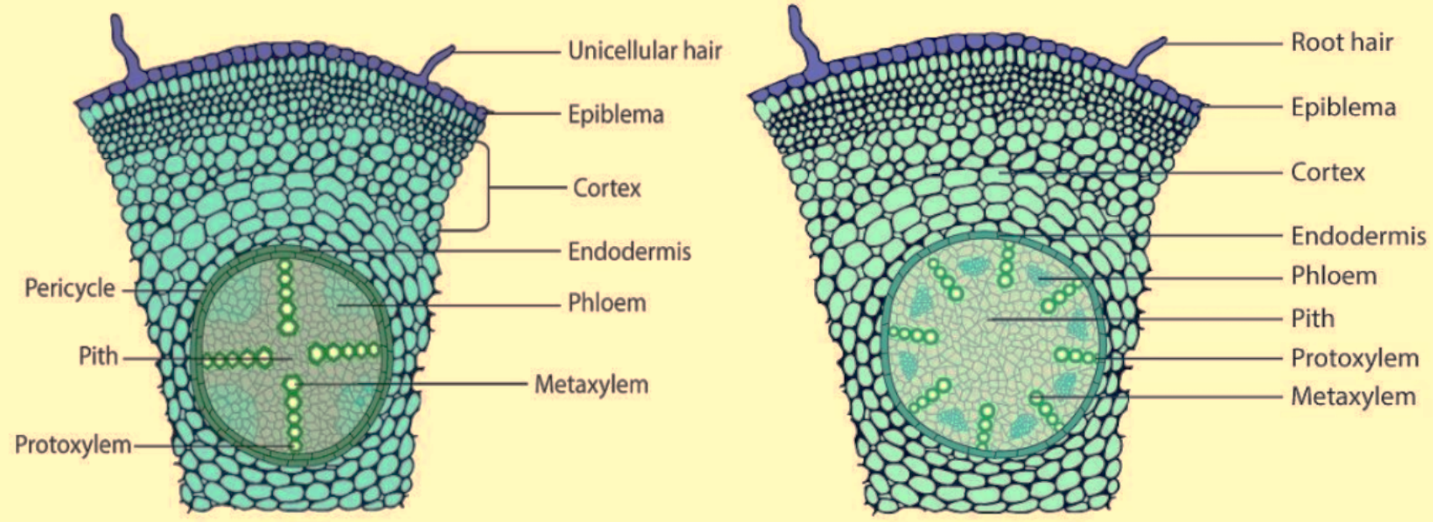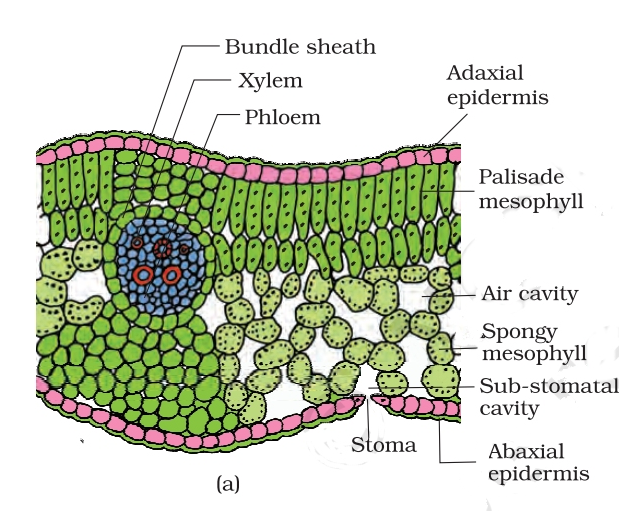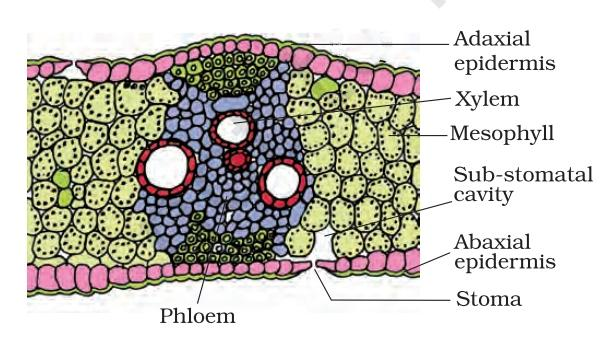Biology Chapter 6 Anatomy of Flowering Plants Notes Class 11 - FREE PDF Download
FAQs on Anatomy of Flowering Plants Class 11 Notes: CBSE Biology Chapter 6
1. What is a Meristematic Tissue and what are its types in Anatomy Of Flowering Plants Notes?
Meristematic tissues are specialised regions in plants that have active cell division. Meristems on the basis of their origin are divided into two parts - Primary and Secondary.
Primary Meristem: This type of meristem is present early in the life of a plant and forms the primary plant body. It is further divided into apical and intercalary meristem.
Apical meristems are present at the root and shoot tips and produce primary tissues.
Intercalary meristems are present in between mature tissues and help in regeneration of parts destroyed by grazing of herbivores.
Secondary Meristem: Also known as the lateral meristem, this type of tissue is present in the differentiated regions of the root and shoot.
2. Describe Permanent Tissues and their types according to Anatomy Of Flowering Plants Notes.
Permanent tissues are tissues differentiated from their meristems and specialised in their structure and functions. The cells in these type of tissues generally do not divide further. On the basis of the structure and function of the cells composed, permanent tissues are either simple or complex. Permanent tissues that comprise of cells with the same structure and function are called simple permanent tissues while permanent tissues made up of cells of different structure performing different functions are called complex permanent tissues.
3. What do you mean by Tissue System from Class 11 Biology Chapter 6 Notes?
Tissues are categorised into different systems on the basis of the division of labour. Each tissue system generally consists of an association of tissues performing a particular function. The three different types of tissue systems include:
Epidermal Tissue System:
Includes epidermis and related cells such as pores, hair, etc.
Ground Tissue System:
Largest tissue system comprising hypodermis, cortex, endodermis, pericycle and medullary or pith rays.
Vascular Tissue System:
This tissue system originates from the cambium and comprises the xylem and phloem.
4. Where can I download Anatomy Of Flowering Plants Notes?
For a detailed understanding of Biology Class 11 Chapter 6, you can refer to the Anatomy of Flowering Plants Notes by Vedantu. The Class 11 Biology Chapter 6 Notes are available on the official website. These noes have been meticulously prepared by the experts at Vedantu and explain all the concepts in the chapter with precision and step-wise manner. You can also download the Class 11 Chapter 6 Biology Notes PDF as it is available free of charge.
5. What is cambium? What is its function according to Class 11 Biology Chapter 6 Notes?
Cambium is the slender membrane found below the bark of a woody plant or tree. In woody plants, cambium provides xylem and phloem layers. Therefore, cambium increases the diameter of the woody plants. It facilitates the secondary growth of stems and roots, thus, in certain plants, it serves as a healing agent. In plants that are injured, cambium is formed inside the callus tissues, thereby, promoting the growth of new cells as a healing agent. There are mainly three types of cambium, cork cambium, vascular cambium, and unifacial cambium.
6. How do the Class 11 Biology Chapter 6 Notes help with exam preparation?
The Class 11 Biology Chapter 6 Notes provide clear summaries of key concepts, helping students understand complex topics and making exam preparation easier. These notes simplify learning by including essential information and diagrams for better understanding.
7. Are the Anatomy Of Flowering Plants Short Notes For NEET PDF updated according to the latest CBSE and NEET syllabus?
Yes, the Anatomy Of Flowering Plants Short Notes For NEET PDF are regularly updated to align with both the CBSE syllabus and NEET exam requirements, ensuring students have access to the most relevant content.
8. Can I use Class 11 Biology Chapter 6 Notes for last-minute revision before exams?
Definitely! Class 11 Biology Chapter 6 Notes are structured to provide quick and easy revision, covering all the important points, making them ideal for last-minute exam preparation.
9. Do the Anatomy Of Flowering Plants Short Notes For Neet PDF include diagrams for a better understanding of the topic?
Yes, the Anatomy Of Flowering Plants Short Notes For Neet PDF include well-detailed diagrams that help students visualise plant anatomy and understand the concepts more clearly.
10. How can I use Class 11 Biology Chapter 6 Notes to strengthen my understanding of difficult topics?
You can go through the simplified explanations and diagrams in the Class 11 Biology Chapter 6 Notes. These notes break down challenging topics into easy-to-understand points, helping you grasp complex concepts more effectively.
11. Are the Anatomy Of Flowering Plants Short Notes For NEET PDFs suitable for NEET exam preparation?
Yes, these notes are specifically designed to help students prepare for NEET, covering essential topics from the syllabus, and providing concise, easy-to-understand explanations for efficient revision.
























